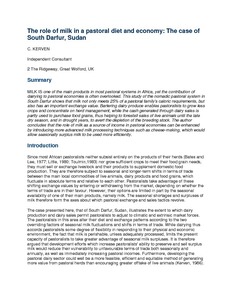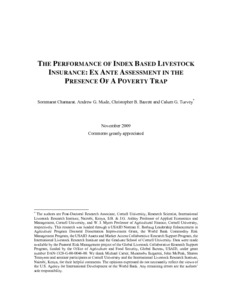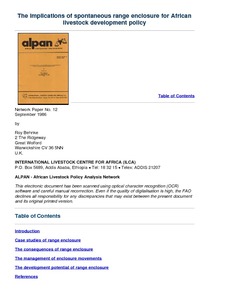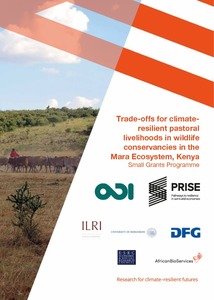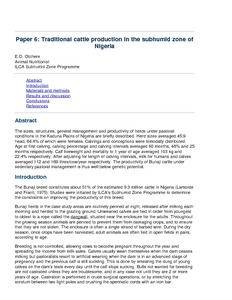The role of milk in a pastoral diet and economy: The case of South Darfur, Sudan
Describes the characteristics of dairy production and processing in South Darfur and provides an analysis of the way in which pastoral families vary their diets according to seasonal food shortages and shifting terms of trade between milk and food grains.

